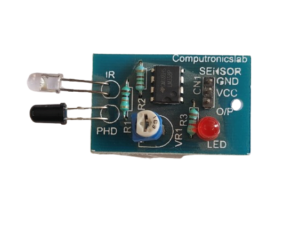No products in the cart.
Heat Sinks
Heat Sink 1 inch (Pack of 5)
Availability:
6 in stock
A 1.5-inch heat sink efficiently dissipates heat from electronic components like CPUs, LEDs, and power electronics, enhancing performance and reliability by maintaining optimal operating temperatures. Constructed from materials like aluminum or copper, it offers effective thermal management and durability in various applications.
₹89.50 ₹141.60 (Incl. GST)
6 in stock
Heat Sink 1 inch
A 1 -inch heat sink is a crucial component in electronics and electrical engineering, designed to dissipate heat efficiently from electronic devices and components. Here’s a detailed overview of its features, applications, and benefits:
Key Features
1. Size and Dimensions
- The heat sink 1 inch typically refers to the width or diameter of the base, which determines its thermal dissipation capabilities.
- It comes in various lengths and heights to accommodate different electronic components and cooling requirements.
2. Material Composition
- Constructed from materials like aluminum or copper, known for their excellent thermal conductivity.
- Aluminum is lightweight and cost-effective, while copper offers higher thermal conductivity but is heavier and more expensive.
3. Thermal Efficiency
- Heat sinks enhance thermal management by absorbing heat from electronic components through conduction and dissipating it into the surrounding environment.
- Fins or ridges on the surface increase surface area, improving heat dissipation efficiency.
4. Mounting Options
- Heat sinks are designed with various mounting options, including clips, adhesive tapes, screws, or thermal compounds for direct attachment to electronic components.
- Secure mounting ensures efficient heat transfer and stability during operation.
5. Applications
- Computing and Electronics: Used in CPUs, GPUs, voltage regulators, and other semiconductor devices to prevent overheating and maintain optimal operating temperatures.
- LED Lighting: Essential for cooling high-power LEDs to extend lifespan and maintain light output efficiency.
- Power Electronics: Applied in power supplies, inverters, motor drives, and amplifiers to manage thermal loads and improve reliability.
- Telecommunications: Utilized in routers, switches, and telecommunications equipment to ensure stable performance under varying environmental conditions.
Advantages
- Temperature Management: Effectively reduces operating temperatures of electronic components, enhancing performance and longevity.
- Reliability: Prevents thermal throttling and component failures due to overheating, ensuring consistent operation.
- Versatility: Suitable for a wide range of electronic devices and applications, providing scalable cooling solutions.
Selection Considerations
- Size and Compatibility: Choose a heat sink size that matches the dimensions and thermal requirements of the electronic component.
- Material: Select aluminum or copper based on thermal conductivity needs and weight considerations.
- Mounting Method: Ensure proper attachment method to optimize thermal contact and heat transfer efficiency.
Conclusion
The 1 inch heat sink is a vital thermal management component for electronics, offering efficient heat dissipation to prevent overheating and maintain reliable operation. With various sizes, materials, and mounting options available, it provides versatile cooling solutions across computing, LED lighting, power electronics, and telecommunications applications, contributing to enhanced performance and longevity of electronic devices.
| Weight | 0.00 kg |
|---|---|
| Dimensions | 0.00 × 0.00 × 0.00 cm |






There are no reviews yet.